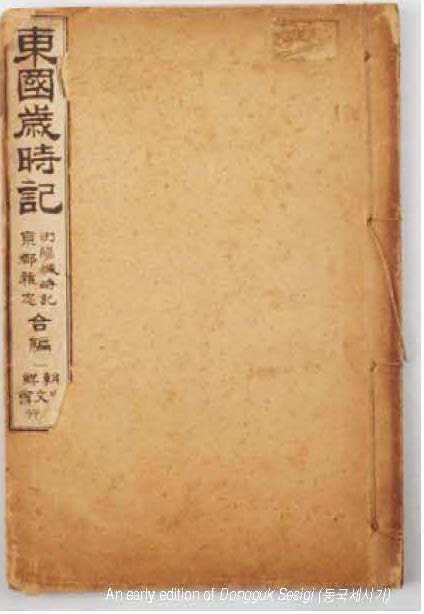Seollal: Korea's First Day of the New Year
- Seung-Kook Kim

- Jan 20
- 4 min read
The year 2025 has already begun, but the first day of the Lunar New Year, the Year of the Blue Snake (일사년) , will officially start on January 29. Koreans call this day 'Seollal (설날).' In ancient Korea, the start of the year marked by the Winter Solstice, and the 15th day of the first lunar month, called Jeongwol Daeboreum (정월 대보름), was considered the official start of the year. Regardless, Korea's true Seollal is just a few days away.
The most sung and heard children's song on Seollal is "Seollal," a song written and composed by Korean children's song writer Yun Geukyoung (1903-1988). Its lyrics are as follows:
짜치 짜치 설날은 어저께고요.
우리 우리 설날은 오늘이래.요.
곱고 고운 댕기도 내가 드리고,
새로 사온 신발도 내가 신어요.
The Magpie's Seollal was yesterday,
but our Seollal is today.
I wear the beautiful new ribbon,
and the new shoes were gifted to me.
Every Korean person must have sung this song in their childhood. However, a question always arises: "Why is the Magpie's Seollal yesterday, and our Seollal today?"
There are various theories about the origin of the "Magpie (Kkachi, 까치) Seollal." One theory suggests that the term "Achanseol," meaning the "small Seollal" (the day before Seollal), evolved over time into "Achiseol," and eventually became "Kkachi (Magpie) Seollal" due to the similar sounds of "Achi" and "Kkachi." Another theory comes from a story in Samguk Yusa (a historical text) where, during the reign of King Soji of Silla, the queen conspired with a monk to harm the king, but they were thwarted by the help of animals like the crow, rat, pic, and dragon. To commemorate this, Soji made the day before Seollal a special day for the crow, which later transformed into the "Kkachi" in the legend.
However, it is crucial to examine the historical context of 1924 when Yun Geuk-young wrote the song "Seollal." This was 14 years after Korea lost its sovereignty to Japanese imperialists and was under colonial rule, a time of deep emotional turmoil for the Korean people. I believe Yun Geuk-young may have used the "Magpie Seollal" as a symbol of resistance to the forced celebration of the Western New Year by the Japanese, and instead celebrated the authentic Korean New Year, the Lunar New Year (Seollal), with the song's refrain "Our Seollal."
For older generations, the memories of Seollal and the night before, Seotdal Geumeum (섣달 그믐, the last day of the year), are unforgettable. A common belief was that if you slept on Seotdalgeum night, your eyebrows would turn white. This belief led children to stay awake one New Year's Eve, even though they were exhausted, so that they wouldn't be teased by their family when they woke up with white eyebrows. During the Joseon Dynasty, commoners had a custom of staying awake around the brazier on Seotdalgeum night in a tradition called "Suese" (수세, guarding the year).

The first thing that comes to mind when thinking of Seollal (Lunar New Year) is 떡국 (tteokguk), or rice cake soup. Eating this soup is tradition, as it is said that by eating tteokguk, one gains a year of age. The history of tteokguk goes back a long way. In the Korean folk record Dongguk Sesigi (동국세시기), it is written: "Steamed glutinous rice flour is placed on a large board, then repeatedly pounded with a mortar and pestle to make long, cylindrical rice cakes (garaetteok, 가래떡). These are called white rice cakes (baegbyeong, 백병). The rice cakes are sliced into small coin-sized pieces and added to a broth, which is boiled. The broth is seasoned with beef, pheasant meat, and chili powder, and is called tteokguk (also called byeongtang). This dish is used in ancestral rites and served to guests, in making it an indispensable part of the sechan (New Year's feast)."
Making the long rice cakes symbolizes the wish for a long life, as they resemble longevity. Slicing the rice cakes into coin-shaped pieces and adding them to the soup represents the hope for wealth and prosperity.
For those unable to obtain beef or pheasant for the broth, chicken was used instead. In northern regions like Hamgyeong-do, Pyeongan-do, and Gangwon-do, where it was difficult to find glutinous rice, people greeted the New Year by preparing mangu-guk (dumpling soup) made with wheat flour.
According to Dongguk Sesigi, the customes of Seollal include visiting family ancestors' shrines for a ritual called charye (차례), wearing new clothes called sejang (세장), and paying respects to elders with sabae (세배), a deep bow wishing them good health and fortune. The foods served for Seollal are known as sechan (세찬), and seju (세주) refers to the wine served during the celebrations. While these cusotms have remained largely unchanged, they seem to have slowly faded in modern times.
With Seollal just around the corner, I wish everyone, especially those living away from home, good health and fortune in the new year. May all your hopes and dreams come true!








Comments